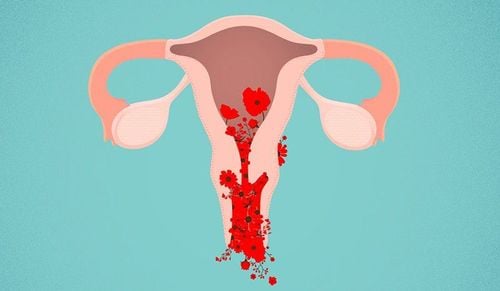This article has been reviewed by MSc. Dr. Trinh Thi Thanh Huyen, Obstetrics and Gynecology Department, Vinmec Hai Phong International General Hospital.
A 4-month pregnancy corresponds to 16 weeks. According to experts, a 16-week pregnancy can still be terminated. However, at this stage, the fetus has developed comprehensively in almost every aspect. Therefore, doctors usually advise pregnant women to keep the fetus unless there are cases of fetal abnormalities or maternal health issues that warrant consideration.
1. What is abortion?
In medical terms, abortion is defined as the termination of pregnancy by removing the embryo or fetus from the mother's uterus before birth. Abortion can occur naturally due to complications during pregnancy or be induced intentionally. Induced abortions are referred to as therapeutic or elective abortions.
Cases where abortion is considered include: When it is the only option to save the mother’s life. To prevent significant physical or mental health impacts on the mother. When there are signs indicating that the fetus has a high risk of congenital physical defects or disabilities. To selectively reduce the number of embryos in a multiple pregnancy to minimize risks associated with such pregnancies.
With advancements in modern medicine, many safe and effective methods of pregnancy termination are now available to protect the health and life of pregnant women. These include:
- Medication-based abortion
- Vacuum aspiration
- Dilation and evacuation (D&E)
Each method is appropriate for specific gestational ages.

2. Is abortion dangerous?
Is abortion dangerous? In reality, numerous complications can arise after an abortion, with the most common being genital tract infections. The uterine cavity is sterile, but during abortion procedures, tools and techniques may cause bleeding, creating favorable conditions for bacterial infections.
Mild complications could be endometritis. Severe complications could be uterine adhesions (scar tissues that form inside the uterus), fallopian tube infections, and potential infertility. More critical risks: If bacteria enter the bloodstream, it can lead to sepsis. Without timely treatment, this can be fatal.
Improper techniques during dilation and curettage or vacuum aspiration can lead to cervical tearing, uterine perforation, retained fetal tissue, or placental fragments. If not promptly addressed, these issues can cause severe bleeding and increase the risk of infection.
However, choosing a reputable medical facility with qualified doctors and modern equipment can significantly minimize these complications. Avoid undergoing abortion procedures at small, unregulated clinics with inadequate equipment or underqualified practitioners. Such choices can expose women to severe and unpredictable complications as described above.
3. Is it possible to terminate a 4-month pregnancy?
A 4-month pregnancy corresponds to 16 weeks. According to experts, it is still possible to terminate a 16-week pregnancy. However, at this stage, the fetus has developed comprehensively in all aspects and is closely connected to the mother's body. For this reason, doctors usually recommend that pregnant women continue the pregnancy unless the fetus has severe abnormalities or the mother's health is not sufficient to sustain the pregnancy. Only in such cases do doctors suggest terminating a 16-week pregnancy.
Moreover, at 16 weeks, the fetus is relatively large. Terminating a pregnancy at this stage may impact the mother’s health. Therefore, if a decision is made to terminate a 16-week pregnancy, the mother should visit reputable medical facilities to ensure safety and effectiveness.

4. Methods for terminating a pregnancy beyond 4 months
For a 4-month pregnancy, the choice of method is crucial to ensure the safety and health of the mother.
Terminating a pregnancy beyond 4 months cannot be done using simpler methods like medication or suction curettage (also known as vacuum aspiration), as these carry significant risks to the mother's health and life. For a pregnancy this advanced, the dilation and evacuation (D&E) method is considered the safest.
Dilation and evacuation (D&E) is a combination of medical and surgical techniques. It involves using medications along with specialized medical instruments to act on the uterine cavity, ending the fetus's development and removing it from the uterus. However, this method is not suitable for everyone.
This procedure is typically applied under the following conditions:
- The fetus is between 13–18 weeks old.
- The mother does not have any infectious diseases or gynecological issues.
- The mother’s overall health is stable, and she does not have liver or kidney diseases or allergies to the components of the medications used in the procedure.
To determine whether dilation and evacuation is suitable for a 16-week pregnancy, it is essential to visit a specialized medical facility. There, doctors can perform necessary examinations and choose the safest and most appropriate method of pregnancy termination.
About the Doctor: Master's Degree Holder, Doctor Trinh Thi Thanh Huyen, specializes in obstetric ultrasound, laparoscopic surgery, and hysteroscopy. Trained at the National Obstetrics and Gynecology Hospital, she has over 13 years of experience working at Hai Phong Obstetrics and Gynecology Hospital.
Currently, Dr. Huyen is an Obstetrics and Gynecology Specialist at Vinmec Hai Phong International General Hospital.
To arrange an appointment, please call HOTLINE or make your reservation directly HERE. You may also download the MyVinmec app to schedule appointments faster and manage your reservations more conveniently.













